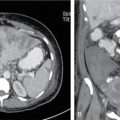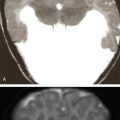S. Mubarak Sazira, S. Babu Peter, Arangasamy Anbarasu Obstructive sleep apnoea (OSA) is a common disorder affecting at least 2%–4% of the adult population and is increasingly recognized by the public. OSA or sleep disordered breathing is characterized by repetitive episodic contractions of upper airway muscles leading to impairment of normal ventilation during sleep. The prevalence of OSA has been estimated to be 14% of men and 5% of women, in a population-based study utilizing an AHI cut-off of ≥5 events/hr (hypopneas associated with 4% oxygen desaturations) combined with clinical symptoms to define OSA. OSA may impact a larger proportion of the population than indicated by these numbers, as the definition of AHI used in this study was restrictive and did not consider hypopneas that disrupt sleep without oxygen desaturation. Patients with OSA have increased risk of developing noncommunicable diseases (such as obesity, diabetes, hypertension) and significant long-term cardiovascular and cerebrovascular morbidity. Scrutiny and recognition of patients who would benefit from early intervention and surgery is crucial. Radiological techniques play a key role in providing a road map to the surgeons for therapeutic planning and anatomical insights. This chapter outlines the clinical evaluation, objective testing methods, various imaging modalities, techniques of MRI with recent advances and key radiological findings in paediatric and adults of OSA. The signs, symptoms and consequences of OSA are a direct result of the derangements that occur due to repetitive collapse of the upper airway: sleep fragmentation, hypoxemia, hypercapnia, marked swings in intrathoracic pressure and increased sympathetic activity. Clinically, OSA is defined by the occurrence of daytime sleepiness, loud snoring, witnessed breathing interruptions or awakenings due to gasping or choking in the presence of at least five obstructive respiratory events (apnoea, hypopnea or respiratory effort related arousals) per hour of sleep. The presence of 15 or more obstructive respiratory events per hour of sleep in the absence of sleep-related symptoms is also sufficient for the diagnosis of OSA. Diagnostic criteria for OSA are based on clinical signs and symptoms determined during a comprehensive sleep evaluation, which includes a sleep-oriented history and physical examination and findings identified by sleep testing. The diagnosis of OSA starts with a sleep history that is typically obtained in one of three settings: first, as part of routine health maintenance evaluation, second, as part of an evaluation of symptoms of OSA and third, as part of the comprehensive evaluation of patients at high risk for OSA. High-risk patients include those who are obese, those with congestive heart failure, atrial fibrillation, treatment refractory hypertension, type 2 diabetes, stroke, nocturnal dysrhythmias, pulmonary hypertension, high-risk driving populations (such as commercial truck drivers) and those being evaluated for bariatric surgery. A comprehensive sleep history in a patient suspected of OSA should include an evaluation for snoring, witnessed apnoea’s, gasping/choking episodes, excessive sleepiness not explained by other factors, including assessment of sleepiness severity by the Epworth Sleepiness Scale, total sleep amount, nocturia, morning headaches, sleep fragmentation/sleep maintenance insomnia, and decreased concentration and memory. An evaluation of secondary conditions that may occur as a result of OSA, including hypertension, stroke, myocardial infarction, cor pulmonale, decreased daytime alertness and motor vehicle accidents, should also be obtained. The physical examination can suggest increased risk and should include the respiratory, cardiovascular and neurologic systems. Features to be evaluated that may suggest the presence of OSA include increased neck circumference (>17 inches in men, > 16 inches in women), body mass index (BMI) ≥ 30 kg/m2, a modified Mallampati score of 3 or 4, the presence of retrognathia, lateral peritonsillar narrowing, macroglossia, tonsillar hypertrophy, elongated/enlarged uvula, high arched/narrow hard palate and nasal abnormalities (polyps, deviation, valve abnormalities, turbinate hypertrophy). The decision on the treatment method can be arrived on after gauging the severity of OSA which can be done either by in-laboratory polysomnography (PSG) or home testing with portable monitors (PMs). PSG comprises evaluation of the physiologic signals such as electroencephalogram (EEG), electrooculogram (EOG), chin electromyogram, airflow, oxygen saturation, respiratory effort and electrocardiogram (ECG) or heart rate. Additional recommended parameters include body position and leg (tibialis anterior) EMG derivations. The frequency of obstructive events is reported as an apnoea + hypopnea index (AHI) or respiratory disturbance index (RDI). OSA is categorized as mild moderate and severe based on the AHI (Apnea Hypopnea Index) or RDI (Respiratory Disturbance Index) (Table 3.44.1). Portable monitors using biosensors such as an oronasal thermal sensor to detect apnoeas, a nasal pressure transducer to measure hypopneas, oximetry and, ideally, calibrated or uncalibrated inductance plethysmography for respiratory effort can be deployed at home to determine the AHI. RDI PM is the number of apnoeas + hypopneas/total recording time rather than total sleep time. As a result, PMs are likely to underestimate the severity of events compared to the AHI by PSG. OSA should be approached as a chronic disease requiring long-term, multidisciplinary management. There are medical, behavioural and surgical options for the treatment of OSA. Positive airway pressure (PAP) is the treatment of choice for mild, moderate and severe OSA and should be offered as an option to all patients. Alternative therapies may be offered depending on the severity of the OSA and the patient’s anatomy, risk factors and preferences. PAP may be delivered in continuous (CPAP), bilevel (BPAP) or auto titrating (APAP) modes. PAP applied through a nasal, oral or oronasal interface during sleep is the preferred treatment for OSA. CPAP is indicated for the treatment of moderate to severe OSA and mild OSA. CPAP is also indicated for improving self-reported sleepiness, improving quality of life and as an adjunctive therapy to lower blood pressure in hypertensive patients with OSA. Behavioural strategies include weight loss, positional therapy, abstinence of alcohol and sedatives before bedtime. Custom made oral appliances such as mandibular repositioning devices (MRDs) and tongue retaining devices (TRDs) can also be used in conjunction with CPAP or for those patients who do not benefit from CPAP. Surgical options include a variety of upper airway reconstructive or bypass procedures and are often site directed as outlined in Table 3.44.2.
3.44: Imaging evaluation of obstructive sleep apnoea
Abbreviations
Introduction
OSA – morbidity and role of imaging
Clinical evaluation
Objective testing
Grade
RDI/AHI (/hour)
Mild
≥5 and <15
Moderate
≥15 and ≤30
Severe
>30
Therapeutic options
Nasal procedures
Septoplasty
Functional rhinoplasty
Nasal valve surgery
Turbinate reduction
Nasal polypectomy
Oral, oropharyngeal and nasopharyngeal procedures
Uvulopalatopharyngoplasty
Palatal advancement pharyngoplasty
Tonsillectomy and adenoidectomy
Excision of tori mandibularis
Palatal implants
Hypopharyngeal procedures
Tongue reduction
Partial glossectomy
Tongue ablation
Lingual tonsillectomy
Tongue advancement/stabilization
Genioglossus advancement
Hyoid suspension
Mandibular advancement
Global airway procedures
Maxillomandibular advancement
Stay updated, free articles. Join our Telegram channel

Full access? Get Clinical Tree








